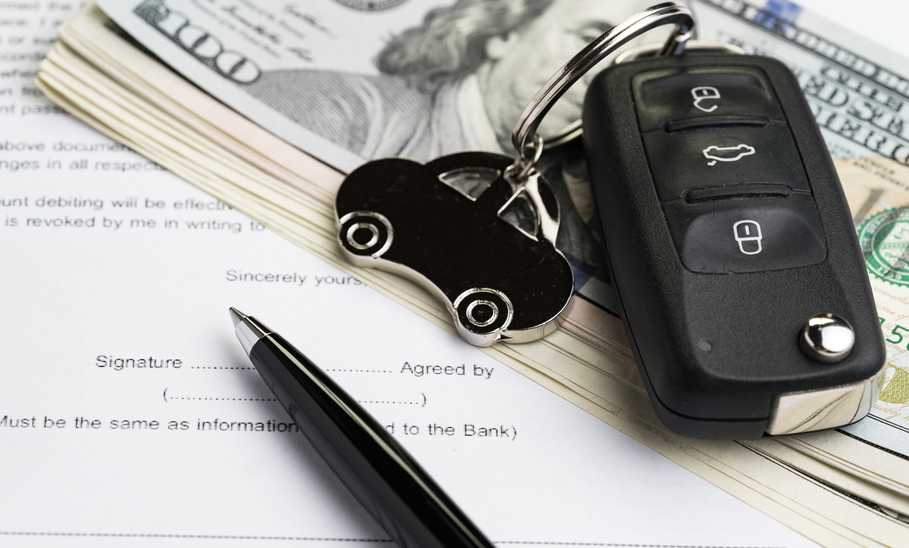How to Lower Your Car Payment: 8 Proven Strategies

Our evaluations and opinions are not influenced by our advertising relationships, but we may earn a commission from our partners’ links. This content is created by TIME Stamped, under TIME’s direction and produced in accordance with TIME’s editorial guidelines and overseen by TIME’s editorial staff. Learn more about it.
Financial experts typically recommend that—at most—10% of monthly take-home pay should go to car payments. With the average new car payment coming in at $744 a month according to the Cox Automotive/Moody's Analytics Vehicle Affordability Index, it pays to find ways to cut costs.
Your options for lowering car payments can depend on whether you already have a car loan or are planning to apply for one to complete a vehicle purchase.
Getting a lower car payment can free up money in your budget, making other costs—such as car insurance or gas—easier to manage. Exploring all available options can help you decide the best way to lower your car payment. Here are eight options to consider:
Auto refinancing means replacing your existing loan with a new one. Depending on how the new loan is structured, you may be able to:
Whether refinancing is worth it can depend on how much of the loan you've paid down. An online auto refinance calculator may give you an idea of how much you'd pay with a new loan.
It's also wise to shop around and compare refinance loan options. With MyAutoLoan, you can compare rates for refinance loans and get up to four offers in minutes. There's no credit check involved in estimating your new rate and monthly payment. Be sure to look at how much total interest you will end up paying if you extend the term of your loan to lower the monthly payment.
Selling your vehicle can eliminate the car payment if you're able to get enough money from the sale to pay the remaining loan balance. If you want to lower your car payment but still need a vehicle, you might consider a trade-in instead.
Here are some tips to keep in mind if you're thinking of selling or trading your car to get a lower car payment.
What if you're upside down on the loan, meaning you owe more than the car is worth it? You could roll negative equity into a new car loan for a less expensive vehicle. While that might lower your car payment, it will leave you with more debt to repay.
If you're unable to keep up with car payments because of financial hardship, your lender might be willing to offer some temporary relief. For instance, you may be able to skip a payment so you have a little time to get caught up. The skipped payment would then be added to the end of your loan term.
If you're still shopping for a car loan, saving for a larger down payment could help you get a lower payment when you're ready to buy. For example, instead of putting 5% or 10% down, you might aim for 15% or 20%.
You can open a high-yield savings account and schedule regular deposits every payday to grow your down payment fund. An online savings account could help you earn a higher rate on your money.
Sofi, for instance, offers a high-yield savings account with a Up to 4.00% APY with direct deposit or $5,000 or more in qualifying deposits during the 30-day evaluation period. APY. You can open a savings account with as little as $0 and there are $0 monthly fees.
Opting for a longer loan term is a simple way to lower your car payment. Let's say you want to take out a $20,000 loan and your lender offers a choice between a 48-month loan or a 60-month loan. To keep things simple we'll assume the rate for both loans is 5%.
Here is what your payments would look like:
A longer loan term means you pay less monthly, but you'll pay more in interest overall. In the previous example, loan B would cost you $537 more in interest. So you'd have to decide whether that trade-off is worth it.
Adjusting your budget for a car could lower your payment if you take out a smaller loan. Instead of spending $20,000, for instance, you might set your budget at $12,000.
This solution may not be ideal if you had your eye on a specific type of vehicle. But it could help make car payments affordable while you work on saving up for your dream car later on.
A lower interest rate on a car loan results in smaller payments. There are a couple of things you might do to get a better rate on your loan such as improving your credit score and shopping around for the right lender.
Raising your credit score could make it easier to qualify for a car loan at a low rate. Some of the best ways to improve your score include making on-time payments to debts and paying down outstanding balances.
Comparing lenders is also a wise move as each one has different terms and lending criteria. Look for lenders that offer rate quotes without impacting your credit score to get a feel for what rates you might qualify for.
If you have the money, pay your loan off early to eliminate your car payment. For example, you might pull cash from savings to cover the balance or sell things you don't need to raise the money.
Lowering your car payment is an opportunity to work toward other financial goals. For example, you might take the money you're saving on car payments and invest it in an IRA or use it to save for another financial goal. Robinhood makes it easy to open an IRA and start building wealth. Even lowering your car payment by a few dollars a month can add up over time.
A common rule of thumb for car payments is that you should spend no more than 10% of your take-home pay per month. If your take-home pay is $6,000, then a $600 car payment might not be too much. On the other hand, if your take-home pay is $2,000, buying a car that requires a $600 payment is unwise.
If your car loan payments are too high, your options include refinancing the loan, selling your vehicle, or trading it in. If you're in the market to buy a car, you might be able to get a lower car payment with a larger down payment or choosing a longer loan term.
You might shorten your car payment by opting for a smaller loan amount or increasing the size of your down payment. You could shorten your loan term to reduce the number of payments you need to make or refinance into a new loan with smaller payments.
SoFi Disclosures: 1. Up to $300 Bonus Tiered Disclosure: New and existing Checking and Savings members who have not previously enrolled in Direct Deposit with SoFi are eligible to earn a cash bonus of either $50 (with at least $1,000 total Direct Deposits received during the Direct Deposit Bonus Period) OR $300 (with at least $5,000 total Direct Deposits received during the Direct Deposit Bonus Period). Cash bonus will be based on the total amount of Direct Deposit. Direct Deposit Promotion begins on 12/7/2023 and will be available through 1/31/2026. Full terms at sofi.com/banking. SoFi Checking and Savings is offered through SoFi Bank, N.A., Member FDIC. SoFi members with Direct Deposit can earn 4.00% annual percentage yield (APY) on savings balances (including Vaults) and 0.50% APY on checking balances. There is no minimum Direct Deposit amount required to qualify for the 4.00% APY for savings (including Vaults). Members without Direct Deposit will earn 1.20% APY on savings balances (including Vaults) and 0.50% APY on checking balances. Interest rates are variable and subject to change at any time. These rates are current as of 12/3/2024. There is no minimum balance requirement. Additional information can be found at http://www.sofi.com/legal/banking-rate-sheet.
2. APY disclosures: SoFi members with Direct Deposit or $5,000 or more in Qualifying Deposits during the 30-Day Evaluation Period can earn 4.00% annual percentage yield (APY) on savings balances (including Vaults) and 0.50% APY on checking balances. There is no minimum Direct Deposit amount required to qualify for the stated interest rate. Members without either Direct Deposit or Qualifying Deposits, during the 30-Day Evaluation Period will earn 1.20% APY on savings balances (including Vaults) and 0.50% APY on checking balances. Only SoFi members with direct deposit are eligible for other SoFi Plus benefits. Interest rates are variable and subject to change at any time. These rates are current as of 12/3/24. There is no minimum balance requirement. Additional information can be found at http://www.sofi.com/legal/banking-rate-sheet.
3. Fee Policy: We do not charge any account, service or maintenance fees for SoFi Checking and Savings. We do charge a transaction fee to process each outgoing wire transfer. SoFi does not charge a fee for incoming wire transfers, however the sending bank may charge a fee. Our fee policy is subject to change at any time. See the SoFi Checking & Savings Fee Sheet for details at sofi.com/legal/banking-fees/.
The information presented here is created by TIME Stamped and overseen by TIME editorial staff. To learn more, see our About Us page.



